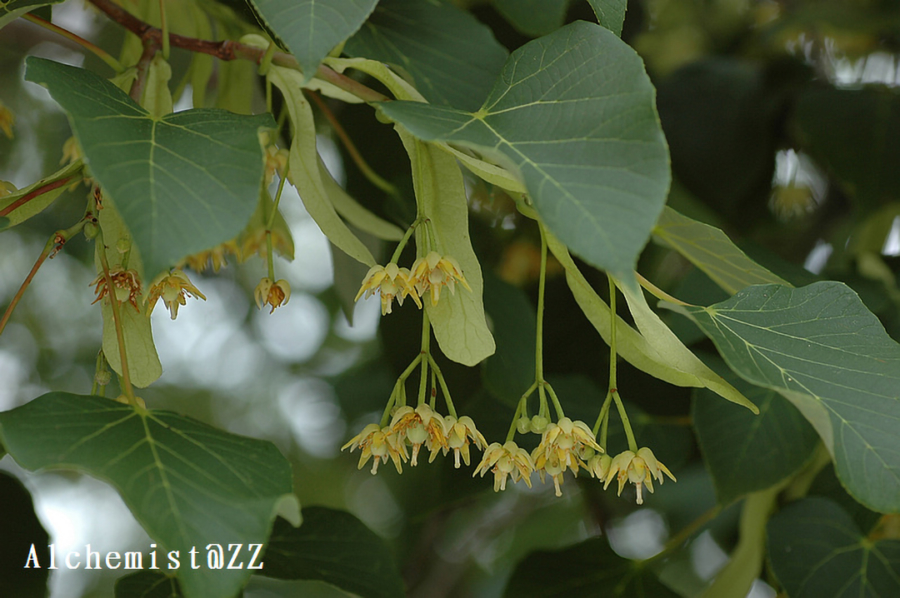- Scientific Name: Tilia paucicostata Maxim.
- Ref: Trudy Imp. S.-Peterburgsk. Bot. Sada. 11:82. 1890
- Chinese Common Name: 少脉椴 shǎomài∙duàn, 少肋椴 shǎolèi∙duàn
- Family: Malvaceae
- Genus: Tilia
- Distribution: Forests; 1300-2400 m. Gansu, Hebei, Henan, Hubei, Hunan, Shaanxi, Sichuan, Yunnan.
- Photo: 07/14/2009, Mt. Taibai, Qinling
Trees 10-15 m tall. Branchlets usually yellow-brown when dry, slender, glabrous; terminal buds minute, glabrous or slightly hairy at tip. Petiole slender, 2-5 cm, glabrous; leaf blade ovate-orbicular or ovate-triangular, (3-)6-10 × 2.5-6 cm, thinly leathery, both surfaces glabrous or abaxially sparsely tomentose in vein axils, lateral veins 5-6 pairs, basal pair usually 1/2 or more as long as blade, veinlets prominent, base truncate or obliquely cordate, rarely rounded, margin serrate or sparsely dentate, apex caudate-acuminate or acuminate. Cymes 3-10-flowered, usually shorter or rarely longer than bract; peduncle adnate with proximal 1/2 bract. Bracts on slender 0.5-2 cm stalk, oblanceolate, 4-6 cm, glabrous. Sepals 4-5 mm, abaxially glabrous, adaxially villous on proximal half. Petals ca. 4 mm, glabrous. Stamens 25-35, in 5 fascicles, glabrous; staminodes 5, linear-oblanceolate, distal 1/2 slightly wider, 1/2 as long as petals. Ovary ovoid, densely stellate puberulent; style glabrous. Fruit obovoid, 6-7 mm, apex usually beaked; exocarp thickly leathery, fragile, indehiscent. Fl. Jun-Aug, fr. Sep-Oct. 2n = 164*. (Flora of China)
